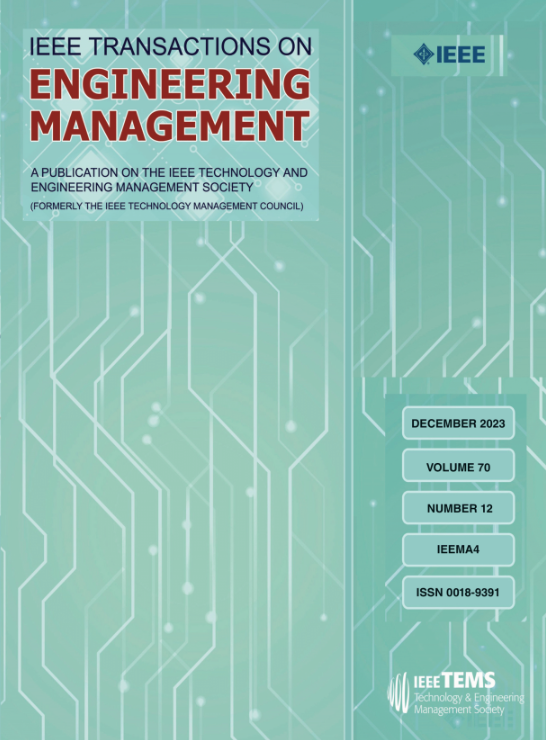Exploring the Evolution of Collaborative Innovation in the Construction and Demolition Waste Management Industry: Evidence From China
IF 5.2
3区 管理学
Q1 BUSINESS
引用次数: 0
Abstract
The construction and demolition waste management industry (CDWMI) plays a strategic role in energy conservation, emission reduction, and the development of a circular economy. Technological innovation, the cornerstone of efficient waste reduction, reuse, and recycling practices, has increasingly attracted global attention. The complexity and uncertainty of CDWMI innovation necessitate collaborative approaches. However, existing research primarily focuses on developing and applying specific technologies, overlooking macroscopic and quantitative measurements of collaborative innovation in the CDWMI. This research evaluates the overall state and dynamics of CDWMI collaborative innovation. First, we collected 1050 cooperative patents and categorized the industry development into distinct stages using technology life cycle analysis. Next, we examined the network structure of collaborative innovation through social network analysis. Finally, we revealed network characteristics and evolutionary processes across different stages from geographical, technological, and organizational dimensions. The results indicate that geographical distance has no significant impact on partnership formation, the technological focus has shifted from recycled building materials to crushing technology, and core enterprises-dominated subgroups have emerged, exhibiting an island effect. This research offers an overview of the actual state of CDWMI collaborative innovation and its underlying causes, marking an advancement over existing research. The findings can assist policymakers in formulating evidence-based strategies to promote industry development.建筑垃圾管理行业协同创新的演进:来自中国的证据
建筑垃圾管理产业在节能减排、发展循环经济中具有重要的战略意义。技术创新是有效减少废物、再利用和再循环做法的基石,日益引起全球关注。CDWMI创新的复杂性和不确定性需要协作方法。然而,现有的研究主要集中在特定技术的开发和应用上,忽视了CDWMI协同创新的宏观和定量测量。本研究评估了CDWMI协同创新的整体状态和动态。首先,我们收集了1050项合作专利,并利用技术生命周期分析将产业发展划分为不同的阶段。接下来,我们通过社会网络分析来考察协同创新的网络结构。最后,我们从地理、技术和组织三个维度揭示了网络在不同阶段的特征和演化过程。结果表明,地域距离对合作伙伴关系的形成没有显著影响,技术重心从再生建材转向破碎技术,并出现了以核心企业为主的子集团,呈现出孤岛效应。本研究概述了CDWMI协同创新的现状及其原因,在现有研究的基础上取得了进步。研究结果有助于决策者制定循证战略,促进产业发展。
本文章由计算机程序翻译,如有差异,请以英文原文为准。
求助全文
约1分钟内获得全文
求助全文
来源期刊

IEEE Transactions on Engineering Management
管理科学-工程:工业
CiteScore
10.30
自引率
19.00%
发文量
604
审稿时长
5.3 months
期刊介绍:
Management of technical functions such as research, development, and engineering in industry, government, university, and other settings. Emphasis is on studies carried on within an organization to help in decision making or policy formation for RD&E.
 求助内容:
求助内容: 应助结果提醒方式:
应助结果提醒方式:


